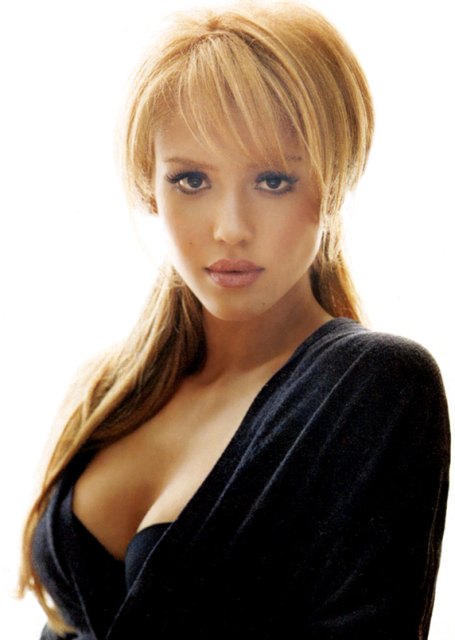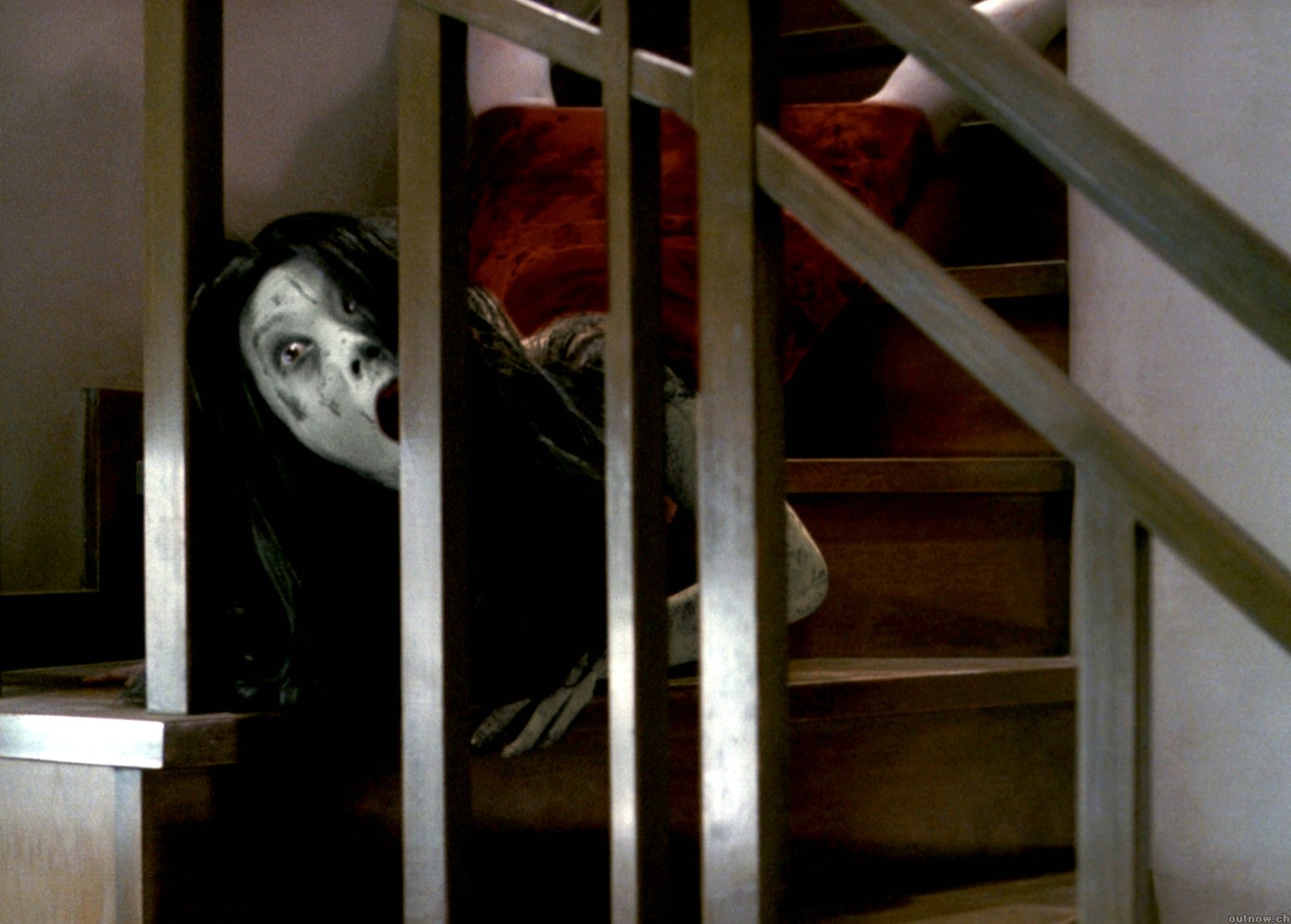
THE EYE (based on the 2002 film by the Pang Brothers) is the lastest in a series of remakes inspired by horror films from Japan, Korea, and China. American audiences first became aware of this trend in 2002, when THE RING (a remake of Japan’s 1998 gem RING) was released to blockbuster success – nearly $130-million at the U.S. box office alone. This led to THE GRUDGE two years later (based on JU-ON: THE GRUDGE), which was almost as big a success as THE RING, earning in excess of $110-million on American screens. Of course, this kind of success inspires repetition, and it seems as if American cinema has been drowning in remakes of Asian horror films ever since (a fact spoofed in the tagline for HATCHET, which proclaimed, “It’s not a sequel, it’s not a remake, and it’s not based on a Japanese one”).
As one might expect from a trend based entirely on mercenary motives, the critical reaction has been mostly negative. After all, few of these films cry out to be remade; most of the originals are superior; and the main stumbling block to U.S. distribution is the language barrier (American audiences do not like to read subtitles, and dubbing often sounds silly). American filmmakers look to Asia less for inspiration than for ready-made templates that can be used to punch out duplicates; besides language and loctation, the major “improvements” usually consist of pumping up the pacing with a few more jump-scares and enhancing the special effects with computer-generated imagery.
What is perhaps a little more surprising in the face of the on-going trend is that, since THE GRUDGE, none of these films has become a blockbuster. In 2005, THE RING 2 topped out at $76-million; a year later, THE GRUDGE 2 fared even worse, falling shy of the $40-million mark. At this point, an Asian-inspired horror film that could crack $30-million would be an anamoly, yet Hollywood keeps churning them out ( apparently the rational is that the film can still be profitable because they can be made cheaply).
This is a sad statement about the lack of originality in the American horror genre. One can hardly blame filmmakers for chasing after the big bucks, but when it becomes an accounting game (“After tallying in DVD sales and ancillary markets, we’re out of the red”), one has to wonder how the mercenary motivation can be strong enough to justify the continuing artistic hackery.
With this preamble in mind, below the fold we offer a rundown of remakes and spin-offs inspired by great Asian horror films. We had originally considered calling this a “Best of” list, until the absurdity of using “best” in this context reduced us to gales of derisive laughter. Read on, if you dare…
* * *
RING (a.k.a. “Ringu,” 1998).
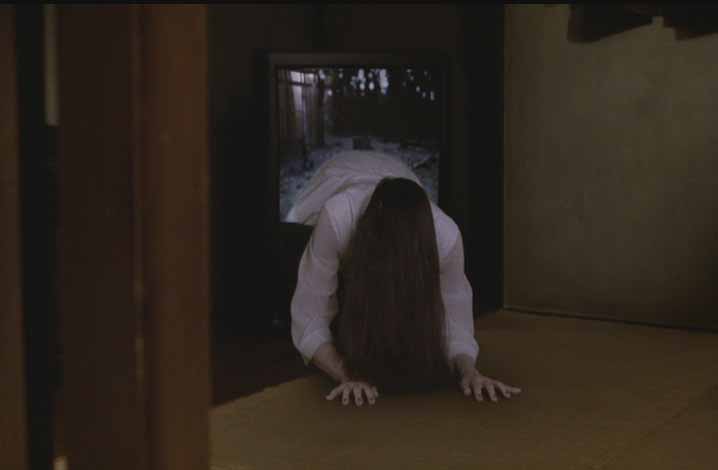
Our first entry is a bit of a joke: the film that started it all is a remake! Koji Suzuki’s novel had previously been adapted as a 1995 Japanese television mini-series that hewed closer to the source material. The feature film version made several significant changes: the lead character became a single woman with a child (as in Suzuki’s short story “Dark Water”); the virus metaphor (with references to small pox and DNA providing a hint of a scientific explanation for the cursed video) was downplayed in favor of the supernatural; and in a nod to David Cronenberg’s VIDEODROME, the memorable conclusion featured the ghostly Sadako emerging from the television set. The rest is horror history.
*
RING 2 (a.k.a. “Ringu 2,” 1999).
This sequel to RING is in a sense a remake, although we may be stretching the definition a bit. The first sequel, RASEN (a.k.a. “Spiral,” 1998, based on Suzuki’s novel), was shot simultaneously with RING, but it turned out to be a box office flop. One year later, the producers went back and made a new sequel. Although RING 2 is officially not a remake of RASEN, it does hit many of the same story points: Takano Mai (Nakatanii Miki) is searching to unravel the mystery of math professor Ryuji Takayama’s death in the first film; the parents of Reiko Asakawa (the reporter from the first film) choose to burn the videotape and die rather than spread Sadako’s curse; and Asakawa dies in a car accident. RING 2 is a bit of a rehash (“let’s take what worked before and do it again”), but it captures a little bit of the mood from its predecessor, and fans may find it diverting.
*
THE RING VIRUS (2000).
Before the Americans got ahold of RING, South Korea delivered this remake (which takes its title from a phrase used in Spiral, Susuki’s sci-fi sequel to his original novel). This film contains several elements from the novel that were abandoned in the Japanese film; in his book The Ring Companion, Denis Meikle goes so far as to insist that RING VIRUS is too different to be considered a genuine remake. Nevertheless, this film retains the essential changes wrought by RING: the protagonist is a woman reporter with a child, and the film ends with the evil ghost (here called Eun-Su) crawling out of a television set. RING VIRUS has little to offer that was not done better in RING, but it does feature a few ideas/images that were borrowed in the later American remake, so the Korean film has had an impact on the trend that followed.
*
THE RING (2002).
Here is where the remake trend really took off at the box office. When producers Laurie MacDonald and Walter F. Parkes saw RING, instead of simply purchasing the distribution rights, the opted to remake it for American audiences. Their version borrows not only from its namesake but also from RING 2 and THE RING VIRUS (and possibly even DARK WATER). It is pretty much a soulless, mechanical affair, “distinguished” by the addition of a few gratuitous shocks (a suicide by electrocution in the bath tub and the goring of a horse by a ship’s propeller) and by some crazy foreshadowing (long before Samara [this film’s version of Sadako, played by Daveigh Chase], a fly magically emerges from a TV screen showing the cursed videotape, but our crack reporter does not sense a front page story at this miracle). The film is not exactly bad, but it is lacking in inspiration and atmosphere, creating some dull passages (unlike the original, which was tense even when nothing was happening). In any case, it was a huge hit, with a worldwide gross of nearly $250-million.
*
THE GRUDGE (2004).
 Uniquely, this remake of JU-ONE: THE GRUDGE was directed by the same man who helmed the original, Takashi Shimizu; not only that, it is set in Tokyo instead of being relocated to America, and Takako Fuji returns as the malevolent ghost Kayako. The American production company, Ghost House, was created by Sam Raimi (director of SPIDER-MAN) specifically to remake foreign horror films for the American market. Raimi wisely realized that, in the horror genre, execution can be more important than story; hence the hiring of Shimizu. The screenplay by Stephen Susco incorporates elements from all four Japanese JU-ON movies and forefronts the leading lady (played by Sarah Michelle Gellar), turning her into a more traditional protagonist and diminishing the fragmented narrative structure of the original. Despite the changes, this is easily the best of the American remakes, the only one that stands on its own. It’s a bit like hearing a recording artist redo one of his own hits: Working with Hollywood resources, Shimizu not only recreates his patented scares; he sometimes exceeds them. For example, check out the wonderful elevator scene, in which cat-ghost boy Toshio is seen on every floor: unlike the original, which relied on editing to fake the illusion, the American remake achieves the effect in a single, continuous take. The result was another box office hit, with worldwide reveneues of over $188-million.
Uniquely, this remake of JU-ONE: THE GRUDGE was directed by the same man who helmed the original, Takashi Shimizu; not only that, it is set in Tokyo instead of being relocated to America, and Takako Fuji returns as the malevolent ghost Kayako. The American production company, Ghost House, was created by Sam Raimi (director of SPIDER-MAN) specifically to remake foreign horror films for the American market. Raimi wisely realized that, in the horror genre, execution can be more important than story; hence the hiring of Shimizu. The screenplay by Stephen Susco incorporates elements from all four Japanese JU-ON movies and forefronts the leading lady (played by Sarah Michelle Gellar), turning her into a more traditional protagonist and diminishing the fragmented narrative structure of the original. Despite the changes, this is easily the best of the American remakes, the only one that stands on its own. It’s a bit like hearing a recording artist redo one of his own hits: Working with Hollywood resources, Shimizu not only recreates his patented scares; he sometimes exceeds them. For example, check out the wonderful elevator scene, in which cat-ghost boy Toshio is seen on every floor: unlike the original, which relied on editing to fake the illusion, the American remake achieves the effect in a single, continuous take. The result was another box office hit, with worldwide reveneues of over $188-million.
*
THE RING TWO (2005).

This time, the American producers followed the example of Sam Raimi and hired the director of the Japanese original to helm their film. Although not officially a remake of RING 2, this American sequel to the 2002 hit takes a similar tack, destroying the cursed videotape right off the bat, instead of following up on the implications of THE RING’s ending (which suggested that copies of the tape would spread like a virus). Having nipped the curse in the bud, the screenplay by Ehren Kruger has to come up with a new story, which it does, but only feebly. Now, Samara seems to want a mother figure to replace the one she lost while alive, and she turns her attention on harassing the son of reporter Rachel Keller (Naomi Watts). With this storyline, and plenty of water imagery, THE RING TWO feels like more of a remake of DARK WATER. Hideo Nagata, director of RING, got a chance to helm this sequel, but he brings little of the atmosphere and intensity he achieved in his Japanese horror films; the film just coasts along, searching for scares like a tourist on a lonely road, desperate for a roadside attraction to break the tedium. The film showed a steep decline at the box office from THE RING, but it was still a big hit worldwide, earning nearly $162-million.
*
DARK WATER (2005).
This is not a particularly bad film, but it succumbs to the all-too-common “it’s not really a horror film” syndrome. Following the plot of the 2001 Japanese film, this remake stars Oscar-winner Jennifer Connelly as a woman going through a painful divorce, who moves into a rundown building with her daughter. The dingy, deteriorating setting becomes an externalization of her declining mental state, and to top it all off, the place is haunted by a little ghost girl looking for a surrogate mother. The film was a box office disappointment, perhaps predictably; after all, its basic had been stolen by THE RING TWO, so audiences were left feeling as if they had seen it all before. Consequently, this is the first evidence that remaking a J-Horror film is not the equivalent of minting gold. Worldwide box office returns fell shy of $50-million.
*
THE GRUDGE 2 (2006).
After the success of THE GRUDGE, this sequel turned out to be a massive disappointment. Like THE RING TWO, this is not an official remake of its Japanese namesake, JU-ON: THE GRUDGE 2; instead, we get an original story that finds screenwriter Stephen Susco (like Ehren Kruger before him) fumbling about when he does not have a pre-written story to copy. Judgin from the behind-the-scenes features on the DVD, there were major disagreements between the American production company and the Japanese filmmakers over what direction to take; the result is a compromised effort that plays out like a weak duplication of its predecessor. Director Takashi Shimizu utilizes his patented scare techniques, but they are undermined by a convoluted structure that delays the pay-offs past the point of audience patience. The film is also hampered by a rather obvious studio injunction to get the story headed toward America, presumably so that subsequent sequels can abandon the Tokyo connection altogether. One gets the feeling that the strategy was to set the franchise up to make less expensive sequels, possibly for the DVD market (a suspicion enhanced by the “Tales from the Grudge” Internet webisodes released before the film, which looked like resume builders for a potential future director). The box office result was a big drop from THE GRUDGE, with worldwide total not quite reaching $69-million.
*
PULSE (2006).
This remake of the enigmatic KAIRO (2001) sat on a shelf for a long time while the Hollywood filmmakers re-tooled it. They might as well have not bothered: when it finally came out, it barely earned $20-million in the U.S., with overseas totals boosting the worldwide total to a meagre $29.8-million.
*
ONE MISSED CALL (2008).
Arriving earlier this year, this remake proved once and for all that Hollywood just does not get it. The 2004 Japanese original (directed by Takasha Miike) was a virtual parody of the cliches that had proliferated in the six years since RING. Ingoring the satirical intent of the original, the American remake treats the material with a straight face, as if it had never been seen before, and the result is decidedly dull, even though the running time is nearly a half-hour shorter. Not only that, director Eric Valette botches the two big set pieces: the death of one victim in a television recording studio, and the resurrection of a corpse in a hospital. As of this writing, the film’s U.S. gross stands at $26.2-million, with overseas revenues yet to kick in. Final tallies should be somewhere in the neighborhood of DARK WATER.
* * *
When a horror sub-genre is so depleted that it cannot deliver even basic scares, it is time to call it quits. Unfortunately, Hollywood refuses to learn its lesson. Not only is THE EYE opening today; A TALE OF TWO SISTERS (remade from the well regarded Korean film) is scheduled for later this year. Oh well, at least the continuing trend of Asian remakes is no worse than TEXAS CHAINSAW MASSACRE, THE HILLS HAVE EYES, THE HITCHER, and FRIDAY THE 13TH.
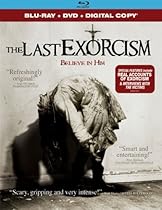
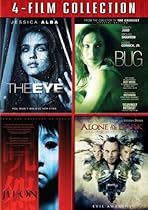 As if that were not enough for penny-pinching purchasers, there is a series of discs bearing the label “Four Film Collection,” which true to their name offer a quadruple does of terror. Sometimes the combinations seem apprpriate; at other times, it seems like whatever was contractually available was thrown together. For example, putting LEPRECHAUN 1 through 4 in a package makes sense (or at least as much sense of releasing a LEPRECHAUN movie can), but simultaneous releasing a disc with PUMPKIN HEAD II, LEPRECHAUN, WISHMASTER, and WISHMASTER 2 is a bit of a jumble. Even more discordant is the combination of THE EYE (the American remake of the Chinese original), JU-ON: THE GRUDGE (the Japanese original that was remade with American stars), BUG (the psycho-drama directed by William Friedkin), and ALONE IN THE DARK (an obscure thriller starring Christian Slater as a private investigator who specializes in supernatural phenomena). A bit more comfortable nestled together are BORDERLAND, DARK RIDE, UNEARTHED, and THE GRAVE DANCERS: although not labeled as such, all of these titles have appeared under the After Dark Horrorfest label, which gives weekend-long theatrical exposure to films that otherwise would go straight to video. Of these, THE GRAVE DANCERS is probably the best film ever to screen as part of the horror fest.
As if that were not enough for penny-pinching purchasers, there is a series of discs bearing the label “Four Film Collection,” which true to their name offer a quadruple does of terror. Sometimes the combinations seem apprpriate; at other times, it seems like whatever was contractually available was thrown together. For example, putting LEPRECHAUN 1 through 4 in a package makes sense (or at least as much sense of releasing a LEPRECHAUN movie can), but simultaneous releasing a disc with PUMPKIN HEAD II, LEPRECHAUN, WISHMASTER, and WISHMASTER 2 is a bit of a jumble. Even more discordant is the combination of THE EYE (the American remake of the Chinese original), JU-ON: THE GRUDGE (the Japanese original that was remade with American stars), BUG (the psycho-drama directed by William Friedkin), and ALONE IN THE DARK (an obscure thriller starring Christian Slater as a private investigator who specializes in supernatural phenomena). A bit more comfortable nestled together are BORDERLAND, DARK RIDE, UNEARTHED, and THE GRAVE DANCERS: although not labeled as such, all of these titles have appeared under the After Dark Horrorfest label, which gives weekend-long theatrical exposure to films that otherwise would go straight to video. Of these, THE GRAVE DANCERS is probably the best film ever to screen as part of the horror fest.
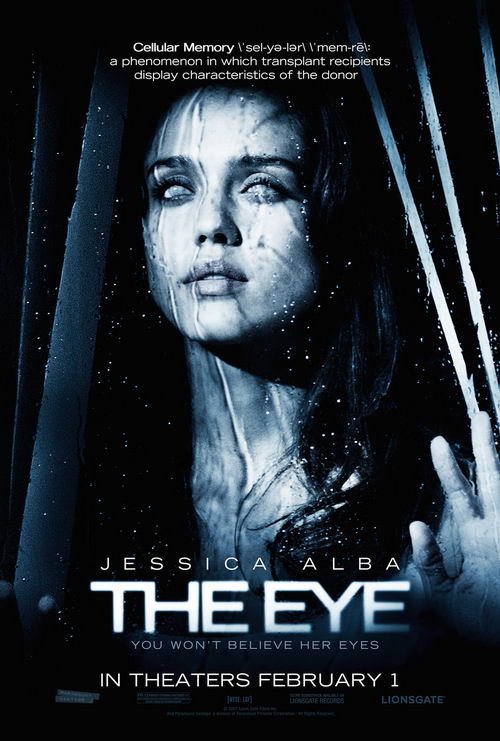
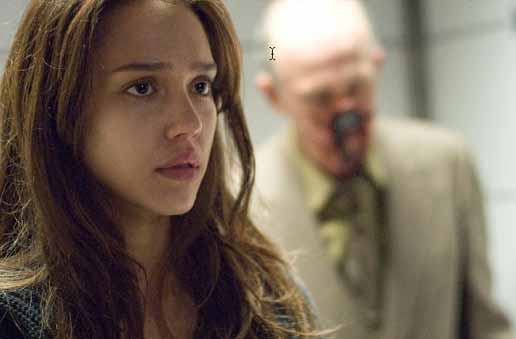




 This follow-up to
This follow-up to 

